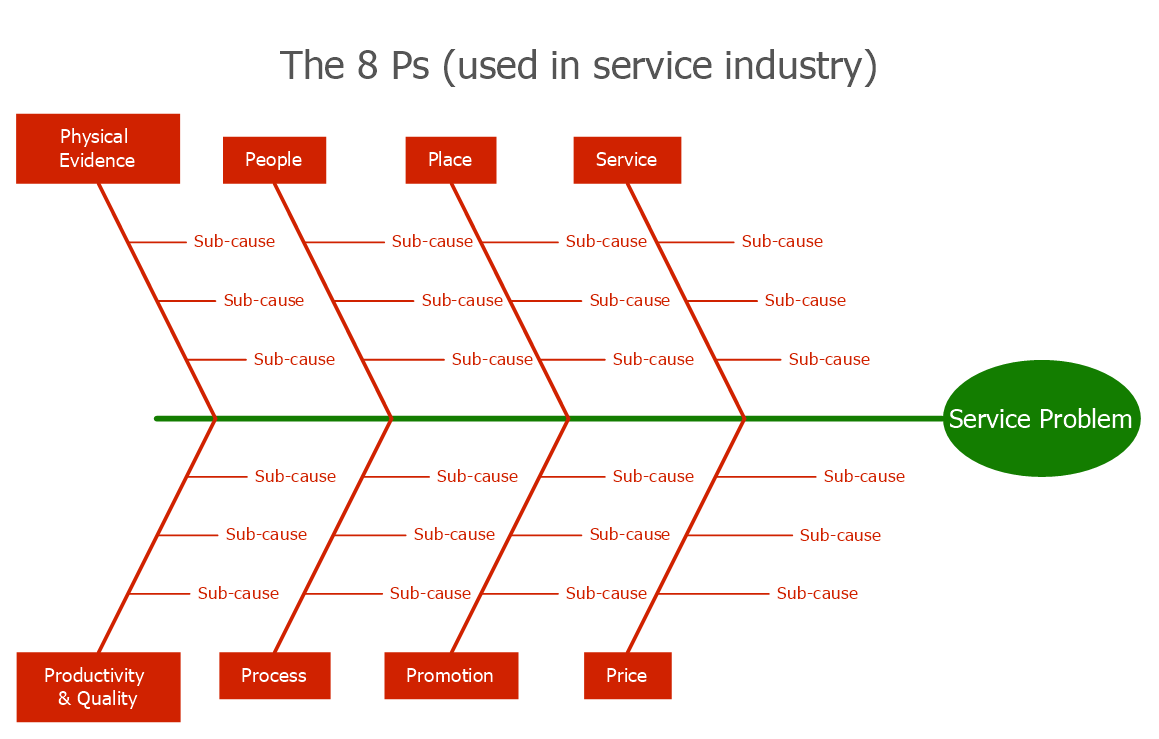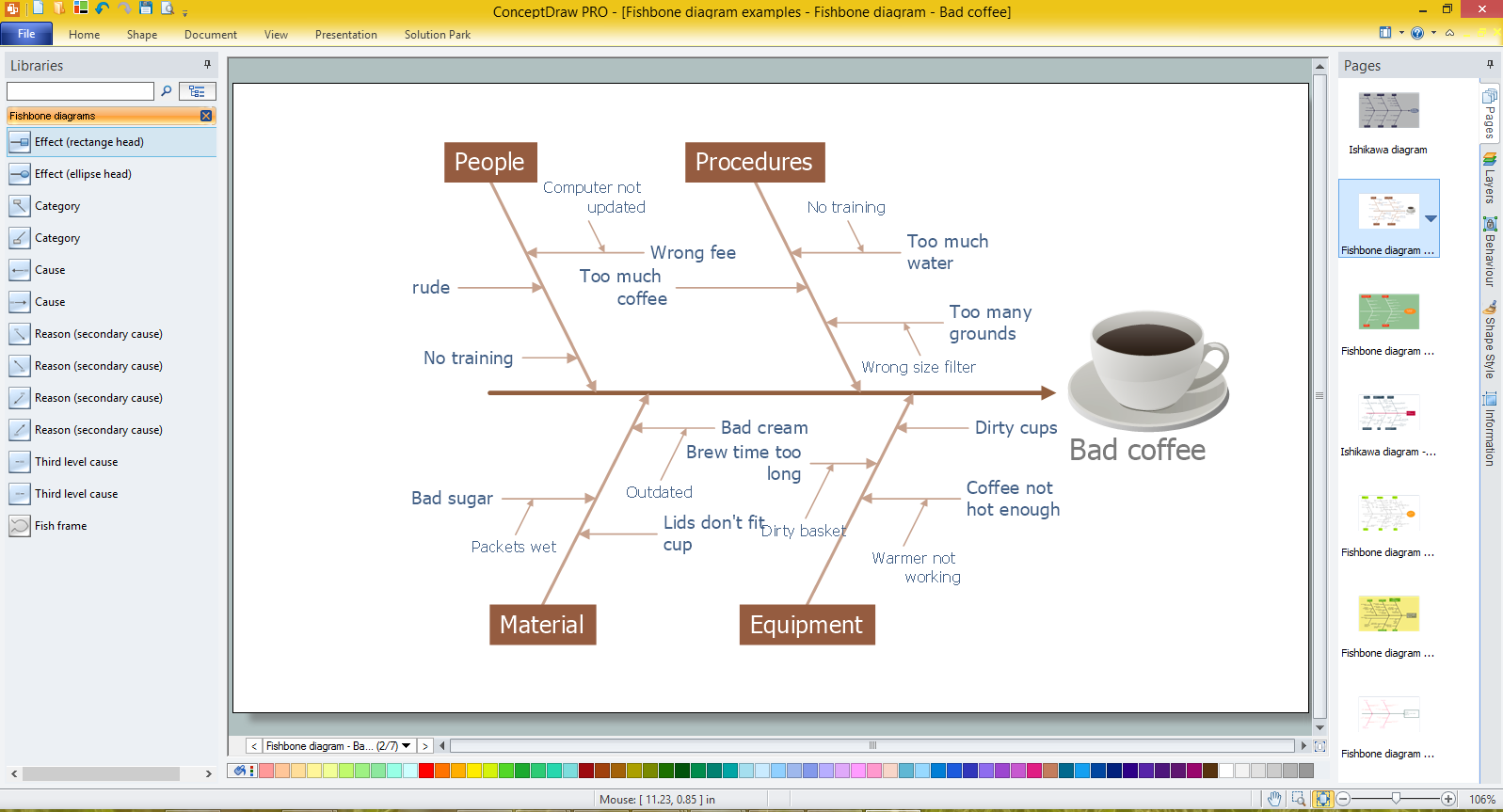

These individual branches are clustered into different categories. In order to solve a problem, you first have to know what’s causing it. This statement is then added at the mouth of the \”fish\”, and then individual bones branch out vertically on either side of the main line connecting the \”fish head\” to the \”fish tail\”. All team members should agree on the statement of the problem. A \”why\” question will help in brainstorming, as each root cause should result in an answer to that question. The cause-and-effect analysis allows problem solvers to broaden their thinking and look at the overall picture of a problem. To create a fishbone diagram, first identify the main issue of concern which could be a quality issue, not meeting metrics, or troubleshooting in the form of a question such as \”Why was the product delivery deadline missed?\”. Be as clear and specific as you can about the problem. Quickly get a head-start when creating your own problem solving mind maps. In 50 minutes you will be able to: Recognize the benefits of using the Ishikawa diagram for problem-solving and project management Clearly identify the root causes of a.
#ISHIKAWA DIAGRAM PROBLEM SOLVING DOWNLOAD#
Moreover, the fishbone diagram captures visually the many potential causes of a specific problem or effect, with the problem or effect displayed at the mouth of the \”fish\” and the possible causes listed along the smaller bones of the \”fish\” under various cause categories. How does a Fishbone diagram works The head of the fish is created by listing the problem in a statement format and drawing a frame around it (see example). A free customizable problem solving template is provided to download and print. Anticipate and solve problems within your businessThis book is a practical and accessible guide to understanding and implementing the Ishikawa diagram, providing you with the essential information and saving time. The diagram is particularly useful in a team setting and for situations in which little quantitative data is available for analysis.

Kaoru Ishikawa, a Japanese quality control expert, is credited with creating the fishbone diagram to help employees easily identify many possible causes and factors of a much larger problem and help sort these ideas into useful categories. The fishbone diagram is one of the most important quality tools out of the 7 Quality Control tools used in process improvement.ĭr. This type of cause and effect diagrams are also known as a fishbone diagrams, or Ishikawa diagrams. A cause and effect diagram is a good way to capture these different ideas and stimulate the team’s brainstorming effort to identify probable root causes. Beware of defining the problem in terms of a solution (e.g., we need more of something). Be as clear and specific as you can about the problem. This is written at the mouth of the fish. Agree on the problem statement (also referred to as the effect).

There can be many opinions as to what the root cause of a problem is, especially when there is a team tasked with solving an issue. The team using the fishbone diagram tool should carry out the steps listed below.


 0 kommentar(er)
0 kommentar(er)
